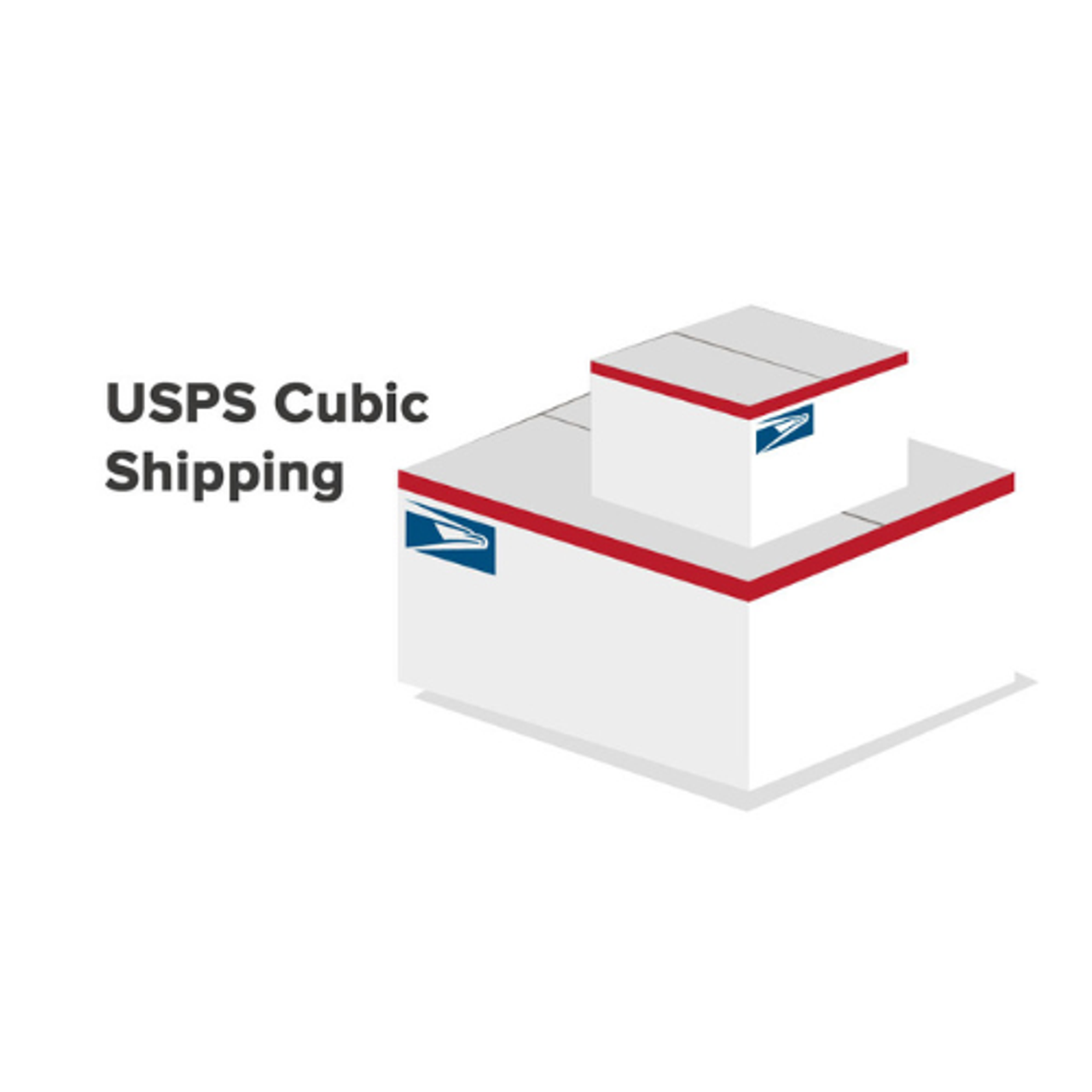
If the myriad of shipping options available to you wasn’t already complicated enough, get ready to learn about another one! You’re probably familiar with USPS Priority Mail and USPS Ground Advantage. But did you know each of these services has a separate pricing option called “Cubic Pricing”?
If you consistently ship parcels under 1 cubic foot, this pricing method could help you shave multiple dollars of each parcel you ship with USPS. But, it comes with added complexities and requirements that can make it difficult to properly implement. In this post, our goal is to help you determine if using Cubic Pricing is the right choice for you!
What is USPS Cubic Pricing?
Before diving into the pros and cons, let’s quickly define what USPS Cubic Pricing is. Cubic pricing is a dimension-based pricing model offered by the USPS for Priority Mail and Ground Advantage shipments.
Instead of being charged based on the greater of either the raw weight of a package or its dimensional weight (volume / 166), shippers are charged based purely on the volume of the package.
Also, when using Cubic pricing, the available tiers are different. Instead of being based on dimensional weight (volume / 166), tiers are based on the cubic footage of the parcel (length x width x height / 1728) .
Each tier represents 1/10th of a cubic foot. Priority Mail only allows up to 0.5 cubic feet while Ground Advantage allows up to 1 full cubic foot.
What makes USPS Cubic Pricing a game changer for your business?
Cost Savings on Small, Heavy Items: Since cubic pricing is based on package dimensions rather than calculated weight, it can lead to significant savings if you’re shipping small but heavy items. Depending on your package size, you’ll start to see savings if your packages weigh over 4 lbs and are under 1 cubic foot. Keep in mind cubic pricing is only available for shipments under 20 lbs.
Speed: Because cubic pricing is available for Priority Mail, you can often get express delivery times (1-3 days) from Priority Mail for the same (or similar) cost to a non-cubic Ground Advantage shipment.
No Residential Surcharges: Unlike UPS and FedEx, the USPS doesn’t add residential surcharges to their shipments, making it a potentially cheaper option for heavy and small direct-to-consumer shipments. I know quite a few businesses who use FedEx and UPS because their shipments are heavy. When they implemented cubic pricing from USPS they saw immediate savings of $3+ on certain shipments.
What makes USPS Cubic Pricing potentially hard to leverage?
Size Restrictions: There’s a maximum size restriction for cubic pricing, so it’s not suitable for all packages. If you have larger shipments, you might have to explore other USPS shipping methods or consider alternative carriers. UPS and FedEx can often provide better pricing for heavy shipments.
Added Complexity: While some platforms like ShipStation automatically select the lower cost between Cubic and standard pricing when applicable, if your shipping software doesn’t do this, it can be difficult to understand when it’s cheaper or if a parcel qualifies for cubic pricing. Accurately measuring and calculating cubic dimensions is crucial to getting the best rate.
Adjustments: If you’re using a platform like ShipStation, automation rules that select a package size might be inaccurate. When using inaccurate dimensions to request Cubic rates, you might receive a price that isn’t applicable to your shipment. If this happens, the USPS will apply an adjustment to your account on that shipment. This will increase the cost of that shipment. Conversely, it’s possible that non-cubic pricing was actually cheaper if inaccurate weight or dimensions were used to purchase the shipping label.
So what should you do?
USPS Cubic Pricing offers tremendous value when leveraged properly. If you use a platform like ShipStation, Shippo, or EasyShip that handles cubic pricing for you automatically, you’re probably already using it without even knowing! I’d recommend making sure you dial in your parcel weights and dimensions as much as possible to get the most out of Cubic pricing.
Businesses that fair particularly well from cubic rates are ready-to-drink beverage companies, electronic suppliers, and home supply businesses. Basically anything where you sell dense products. If you’re shipping things like apparel, accessories, or other relatively lightweight goods you probably won’t get much out of cubic pricing.
I hope this post helped you understand cubic pricing and if it can have a big impact on your shipping operations or not!